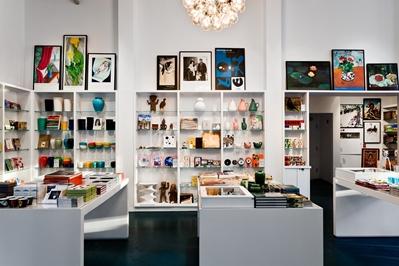Located in the Hammer Building, the LACMA Store recently re-opened after a dramatic remodel. Unframed’s Scott Tennent spoke to Grant Breding, AVP of retail and merchandising, about the store’s new look and new products.
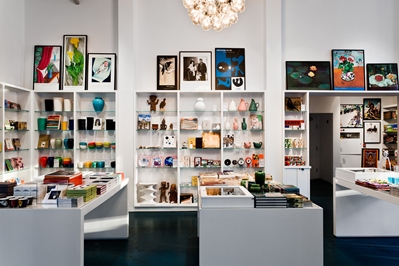
The LACMA Store
What are some of the defining characteristics of the remodel?
With the renovations, the goal was to bring this space back to the 1960s and pretend that the ’80s didn’t happen—taking it back to the bones but also trying to evoke the feeling that the building had originally, which was simple but glamorous. We restored the columns back to their original form, and we restored a window that was covered over, opening the space up so that all this beautiful natural light comes in. Really it was just about simplifying the space so that you see the product. It’s not about the design of the space—it’s about what’s in the space.
Tell me about some of the products you’ve brought in.
I really like to draw on what’s special about Los Angeles and California. Arts and Crafts pottery is major. First of all, LACMA has the largest collection of Arts and Crafts materials out there, so it seems natural to me. And a lot of the stuff is still made—we have beautiful Arts and Crafts pottery vases and there are Batchelder tiles on display in the Art of the Americas Building [that are still being made today]. People love it. They get that this is about Los Angeles and that it happened in this county.
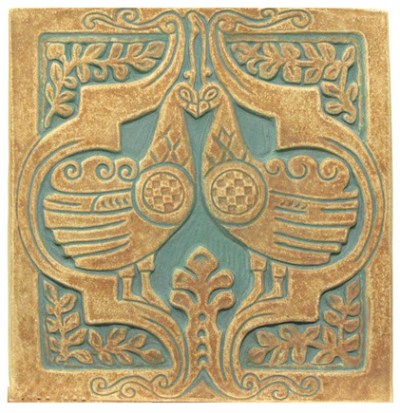
Peacock Tile
What was your approach for making the store reflect the museum’s encyclopedic collection?
There are certain elements that happen in all periods of time. For instance, there are stools from all different time periods, tiles from all different time periods. That was a fun way to approach it because it was like I was doing research. I would see all the different cultures and what they represented. The challenge is to find good quality items that are still made today that reflect an older time. Besides the Arts and Crafts, a couple things I’m very proud of would be finding hand-made, high-quality things like these hand-painted Turkish bowls. First of all, they’re stunning, but in addition to that they’re made by hand. It’s a traditional finely detailed painting method. It perfectly highlights Islamic art.
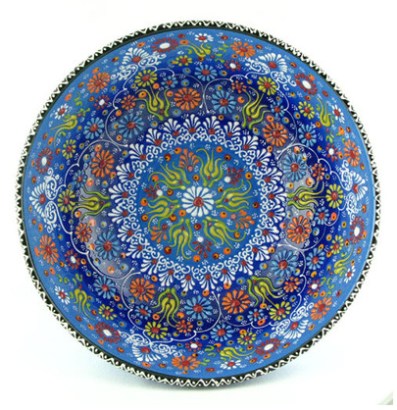
11" Ozel Bowl
We also carry bags made by Dosa, a Los Angeles company. They’re very environmentally friendly and very creative. They are all made from fabrics from places like Mexico, India, and Africa, often using recycled materials, sewn and made by hand in Los Angeles. Every bag is unique. To me, it makes a perfect fit for what we’re trying to do. Another is the African stools. They’re elegant and sculptural. People seem to really respond to them. Again, these are made by hand. We’re supporting the original craftsmen who made it, which is very important to do.
The LACMA Store is right next to the Boone Children’s Gallery—what will kids and parents find in the store?
For children, my attitude is this: you teach kids skills like language and math, and you can teach them aesthetics as well. If you have really interesting design-oriented items that they can play with, they’re learning just because they’re handling them. Charles and Ray Eames were very concerned about getting beautiful things into people’s frame of reference, so that they knew it and could recognize it when they saw it. The Eames House of Cards is perfect for doing that. I also love the new Lego line of Frank Lloyd Wright houses. That’s a driving force for me when I’m finding things: it’s teaching along the way. We also have a large section on children's books. This is a natural way for kids to learn about a really diverse collection because the selection spans all the time periods and artists. I would want parents to be able to come here and find a really good-quality book on art that they can use to teach their children more about something they found interesting in the museum that day.
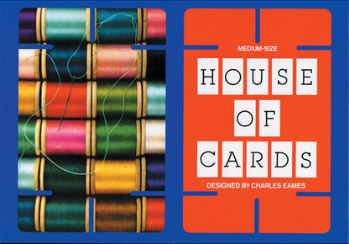
Eames House of Cards
Let’s go from the kids’ bookshelf to the other side of the store: the newsstand. A good art newsstand is not always easy to come by. You’ve got a variety here—not just the typical art magazines but harder-to-find titles like Outpost Journal, A Magazine, Garage, and Condiment, as well as zines.
What’s great about magazines and periodicals is that they’re current and ever-changing. Every month or two you get a fresh outlook. Again, it’s a great way to articulate the entire collection. There are niche magazines on all the different areas that the museum addresses. It’s something that I really take a lot of interest in: finding the great magazines that address a certain topic. It keeps us fresh—it's constantly changing, constantly relevant. I expect it to grow and grow. We’ll always be adding new magazines, always looking for the unique, individual magazines that you don’t always find everywhere. I want to have the hard-to-find magazines here. And zines are not only fun, they’re someone’s artistic vision. It’s a great way for people to get their art out into the world. They’re low-cost—$5 or $10. People collect them. And they’re endless. It’s an area that’s really exploded. A lot of people are working in this area, not just contemporary but all different types of art are addressed in these zines.
How does this store relate to the Art Catalogues store in the Ahmanson Building?
They perfectly complement each other in the sense that Art Catalogues’ focus is on specialized, rare, and out-of-print books as well as a finely curated selection of in-print titles. Dagny [Corcoran, who runs Art Catalogues] also goes deeper into topics and subjects in contemporary art with her offerings, which is great because she is an authority and has the ability to really find rare and special items. Whereas the plaza store is a more traditional museum store but customized to reflect LACMA’s entire collection through unique and special art products and books with a broader scope and a more general tone. I want this store to be an interesting experience for people when they walk in here. It’s relatable—something they know and expect—but they’re going to find something unexpected as well.
Scott Tennent



